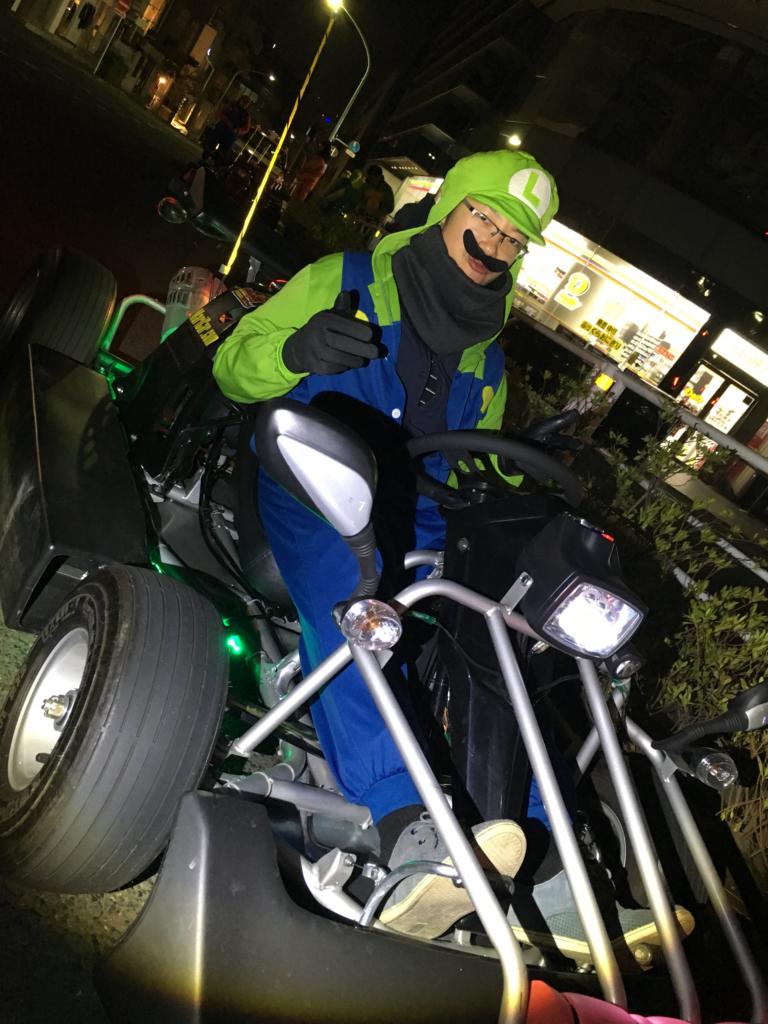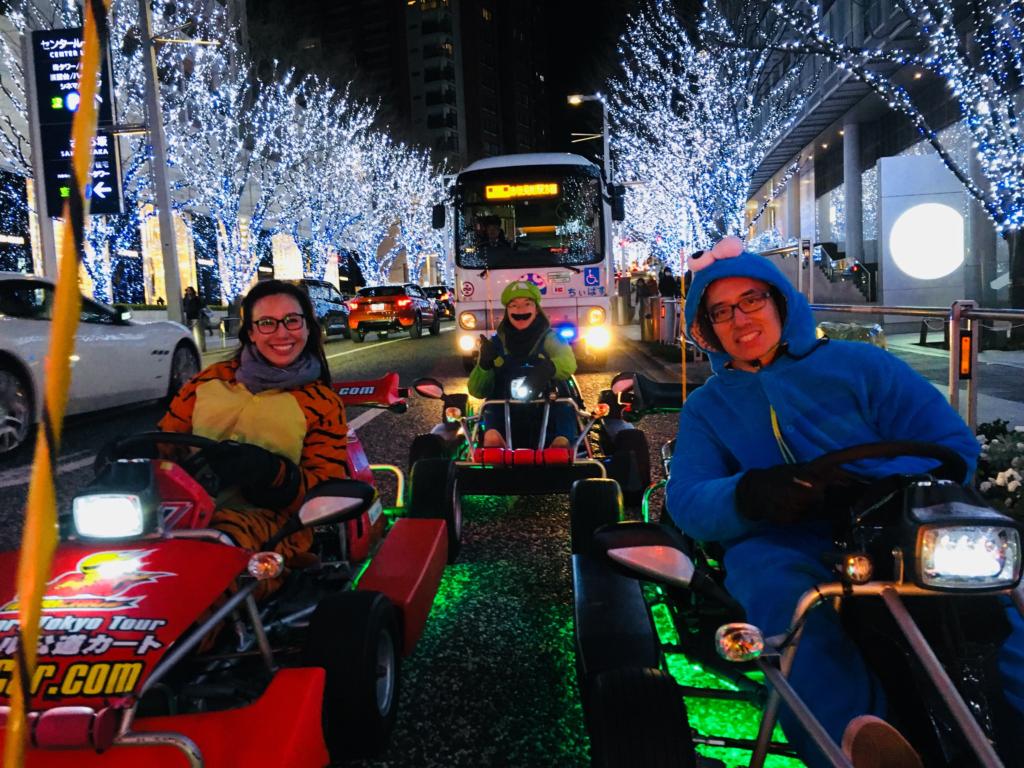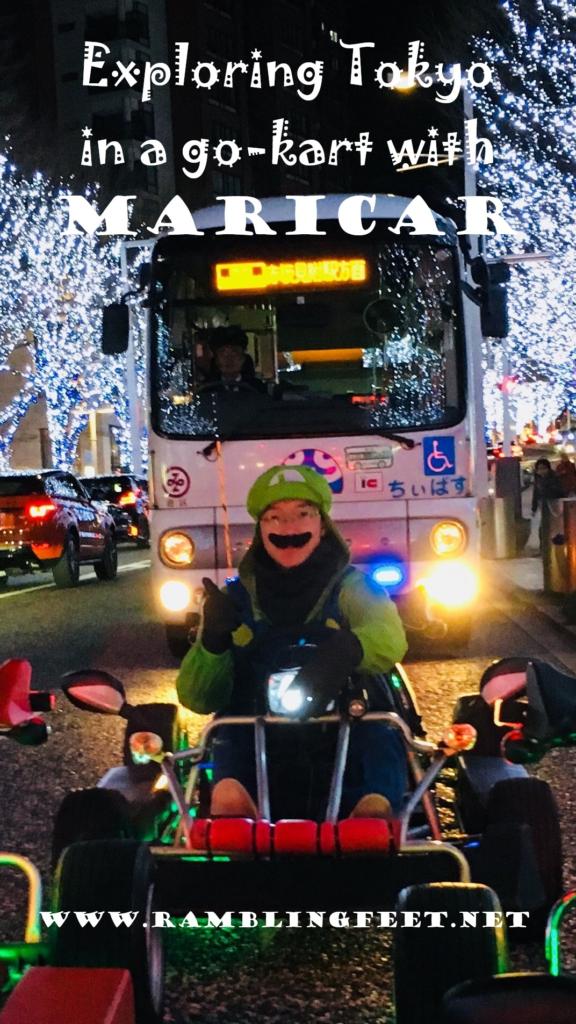Street Kart Tokyo (ex-MariCAR Tokyo): It’s Crazy to Go-Kart on Public Roads at 75km/h
As our Street Kart (formerly MariCAR Tokyo) convoy gunned up the ramp towards the Rainbow Bridge, the insanity of the whole operation dawned on me. The January wind roared in my ears and bit my cheeks, reminding me that I was piloting a pimped-out go-kart on public roads without a helmet. If I crashed, I had only the plush Mario Brothers onesie I was wearing for protection and even that’s not mandatory.
How was it even legal? The more terrifying and bonkers it seems, however, the more it attracts tourists. While I’m not always sold on adrenaline fixes (sky-diving, yes, but not bungy-jumping) – seeing Japan’s capital in a go-kart? Shut up and take my money!
A Street Kart Tokyo MariCAR Tokyo go-kart is still a go-kart
Before leaving the Street Kart Tokyo MariCAR Tokyo Shinagawa shop, we had a good introduction to our vehicles. The vehicles had extra features that normal go-karts wouldn’t have: lights, turn indicators, rearview mirrors, a horn and a touch more ground clearance. Cars wouldn’t be able to see us if it wasn’t for a lighted pole on the back of the kart.
At its heart, however, it was still a go-kart and it behaved like one. The steering was heavy but it responded to every input with alacrity. Trying a go-kart on a closed circuit at home is something I’d recommend if only to get used to this.
Oh, there were also no seatbelts.

Back to the Rainbow Bridge
Even with the added ground clearance, we were still sitting too low to see over the barriers on the Rainbow Bridge. There was no time for sightseeing, anyway: the speedometer was nudging 75 and I had to concentrate on maintaining the gap to the kart in front. Cars still passed us on the next lane; however, they weren’t sprinting away from us. Even at that speed, I still had a little travel left in the throttle pedal. Surely, if given the chance, there was more speed to unlock.
Take that, Singapore. Take your 50km/h speed limit on go-karts in Singapore and shove it.
We were soon on the other end of the bridge and rejoining dense traffic again, though. We zipped towards the remaining landmarks on the three-hour S-L route: Tokyo Tower, the Shibuya scramble crossing and Roppongi. What we lost in speed, we more than gained in gorgeous night scenes and attention from pedestrians. We felt like celebrities when they waved at us and we obliged by waving back.

No hooning allowed
We stuck close together, behaved ourselves and hoped 100% of the drivers we met gave us plenty of room. They had plenty of reason to since a few drivers have been in accidents. Most recently, one of my compatriots dropped it in front of a Roppongi fish and chips shop.
I still allowed myself a moment of hooning, however. Perhaps the attention had got to me, or I was getting hungry.
At Shibuya, we had a good dose of everyone else’s exhaust fumes while waiting for the lights – maybe that’s what really got to my head. With 30 seconds remaining, I put the kart in neutral and looked around for people filming us. No-one was looking.
20 seconds remaining. I pumped the throttle – WOO-WOOO – then I floored it. WOOOOOOW. Cheap thrills achieved, even if the motor sounded like a leaf blower. One less thing to intoxicate us, I guess.
5 seconds remaining. It seemed to take forever to return to idle but it eventually did. I put it back into gear just as the lights turned green. Gearbox intact, I pulled away with the others. Mission accomplished, and I filled my stomach with convenience store oden.
As far as I’m concerned, no other sightseeing tour I’ve done has been this fun. Did that just tempt you to book a tour? I hear a regulatory official hyperventilate somewhere…
Street Kart MariCAR Tokyo – the details
Street Kart, as it is now known, started as MariCAR Tokyo, where it now has several outlets. It also has branches in other Japanese cities. You can check a particular tour’s availability and reserve a slot through their official channels (Facebook Messenger, LINE, etc). Don’t forget to check whether you meet the driving licence requirements first because the staff will ask for a snapshot during the booking process. If you hold a Singapore licence, you need an International Driving Permit (IDP). Any AAS branch in Singapore will make you one in 15 minutes. Alternatively, there’s E-ITA, which also does the job in one day.
Depending on the length of the tour and location, prices range from 7,000 to 10,000 yen. The onesies cost nothing extra to rent but bring extra cash for a quick bite during one of the rest stops. Bring your IDP and passport too.
All the photos you see were taken by the guide and used with permission (from both the company and my tour-mates – thank you!). Don’t use your phone or camera while driving!
Pin this post:

Japan Bucket List: 42 Unforgettable Experiences in Japan
30/05/2019 @ 7:48 PM
[…] Written by Nicholas of Rambling Feet. Read more about Mario Kart in Tokyo on his blog. […]
35 Onvergetelijke activiteiten in Japan voor de ultieme bucketlist!
30/05/2019 @ 11:45 PM
[…] door Nicholas van Rambling Feet. Lees meer over Mario Kart in Tokio op zijn blog (alleen in het […]
The Best of What to Do in Tokyo, Japan
31/08/2019 @ 9:17 PM
[…] To book a tour, contact MariCar via their website, but not before checking their driving license requirements. Don’t worry about the cost of the costumes; it’s included in the price and the guides take care of photographs on the road.” – Nicholas of Rambling Feet […]